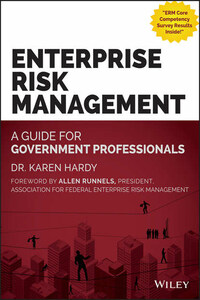Cover Design: Wiley
Cover Images: Isometric buildings © iStock.com/Jamie Farrant, Business People Walking © iStock.com/Robert Churchill, Tightrope Walker © iStock.com/AdrianHillman, Business Executives © iStock.com/4x6, Informal Presentation © iStock.com/A-Digit, Businesswoman Balancing © iStock.com/juhat, Businessman Sitting © iStock.com/trigga, Business Silhouette © iStock.com/OST, Balance © iStock.com/blackred
Copyright © 2015 by John Wiley & Sons, Inc. All rights reserved.
Published by Jossey-Bass
A Wiley Brand
One Montgomery Street, Suite 1200, San Francisco, CA 94104-4594 —www.josseybass.com
No part of this publication may be reproduced, stored in a retrieval system, or transmitted in any form or by any means, electronic, mechanical, photocopying, recording, scanning, or otherwise, except as permitted under Section 107 or 108 of the 1976 United States Copyright Act, without either the prior written permission of the publisher, or authorization through payment of the appropriate per-copy fee to the Copyright Clearance Center, Inc., 222 Rosewood Drive, Danvers, MA 01923, 978-750-8400, fax 978-646-8600, or on the Web at www.copyright.com. Requests to the publisher for permission should be addressed to the Permissions Department, John Wiley & Sons, Inc., 111 River Street, Hoboken, NJ 07030, 201-748-6011, fax 201-748-6008, or online at www.wiley.com/go/permissions.
Limit of Liability/Disclaimer of Warranty: While the publisher and author have used their best efforts in preparing this book, they make no representations or warranties with respect to the accuracy or completeness of the contents of this book and specifically disclaim any implied warranties of merchantability or fitness for a particular purpose. No warranty may be created or extended by sales representatives or written sales materials. The advice and strategies contained herein may not be suitable for your situation. You should consult with a professional where appropriate. Neither the publisher nor author shall be liable for any loss of profit or any other commercial damages, including but not limited to special, incidental, consequential, or other damages. Readers should be aware that Internet Web sites offered as citations and/or sources for further information may have changed or disappeared between the time this was written and when it is read.
The views herein are the author’s and do not necessarily represent those of the United States Government.
Jossey-Bass books and products are available through most bookstores. To contact Jossey-Bass directly call our Customer Care Department within the U.S. at 800-956-7739, outside the U.S. at 317-572-3986, or fax 317-572-4002.
Wiley publishes in a variety of print and electronic formats and by print-on-demand. Some material included with standard print versions of this book may not be included in e-books or in print-on-demand. If this book refers to media such as a CD or DVD that is not included in the version you purchased, you may download this material at http://booksupport.wiley.com. For more information about Wiley products, visit www.wiley.com.
Library of Congress Cataloging-in-Publication Data
Library of Congress Cataloging-in-Publication Data has been applied for and is on file with the Library of Congress.
ISBN 978-1-118-91102-0 (cloth); ISBN 978-1-118-91103-7 (ebk.); ISBN 978-1-118-91112-9 (ebk.)
Karen Hardy understands the value proposition associated with the practice of enterprise risk management (ERM). With this book, oriented toward informing the federal workforce about ERM, she has contributed significantly to expanding the body of knowledge about this extremely important subject. The insights she shares can help encourage and empower the federal workforce at all levels to identify, assess, and manage risk effectively. She writes from both thought-leader and practitioner points of view and focuses upon the need to advance the practice of enterprise risk management in the federal government. She gives readers specific examples of what the practice of risk management looks like in agency operations, and she also includes information about tools available to help manage risk. For the few current champions of risk management in government, this book lays the groundwork for enabling them to obtain buy-in from their agency leadership. For agencies without a champion, it provides an easy-to-read road map that answers the basic question of why organizations should adopt the practice of ERM.
As risk in government becomes more dynamic and complex, managers must become more enlightened and equipped to effectively plan for it, anticipate it, and manage it. The huge balance of the federal debt and the lack of political cooperation to resolve it have led to the sequestration of federal funds, driving drastic reductions in resources available to agencies to accomplish their missions. Federal executives and managers have been asked to do more with less for the last several years, a situation that generates even more risk in the execution of government programs and services. In her book, Karen Hardy asserts that for agencies to best navigate their way through these uncertain times and effectively accomplish their missions, they need to develop an enterprise-wide approach to risk management wherein








